Review: Rocky Mountain Altitude Alloy 30
Rocky Mountain's Altitude Alloy 30 is going to make a lot of people happy. Many top-level riders out there can't afford a top-level bike to match their skillsets. The bustling used mountain bike marketplace bears witness to that. Ride the new Altitude 30, however, and you'll be tempted to forego the used pro-bike with the mystery history and start fresh with a needs-nothing trail machine, that looks sharp, sports contemporary numbers, and costs about the same money. Not convinced?
Start with just right suspension travel - 150 millimeters in the rear with a 160-millimeter-stroke fork splits the difference between a squishy enduro sled and a sprite handling, but technically compromised trail bike. Wheels are 27.5 inch,
Start with just right suspension travel - 150 millimeters in the rear with a 160-millimeter-stroke fork splits the difference between a squishy enduro sled and a sprite handling, but technically compromised trail bike. Wheels are 27.5 inch,
Altitude Alloy 30
• 27.5" wheels
• Aluminum chassis, 150mm travel Horst-Link suspension design
• RockShox Yari RC160mm fork, Deluxe RT shock
• Ride 9, adjustable kinematics and geometry
• Needs nothing component selection
• XS through XL sizes
• Weight: 13.6kg / 30 lbs (medium size)
• $2,999 USD
• Contact: Rocky Mountain
• 27.5" wheels
• Aluminum chassis, 150mm travel Horst-Link suspension design
• RockShox Yari RC160mm fork, Deluxe RT shock
• Ride 9, adjustable kinematics and geometry
• Needs nothing component selection
• XS through XL sizes
• Weight: 13.6kg / 30 lbs (medium size)
• $2,999 USD
• Contact: Rocky Mountain
Most accomplished riders have well-defined parameters for their suspension kinematics and frame geometry. As delivered, the Altitude's handling and suspension strike a near-perfect, in my book, 60/40 compromise between technical and gravity skills (that's the 60-percent) and good pedaling dynamics. If you demand near-perfection, however, Rocky Mountain's "Ride 9" suspension chip offers knowledgeable riders eight alternative adjustments that can alter the shock's leverage rate, frame angles, and bottom bracket height. Not a suspension whiz? Rocky's Ride Nine landing page has easy to follow instructions and kinematic charts to ensure that you can find your way back home if you get lost in the science.
Construction and Features
Rocky Mountain offers the Altitude in both carbon and aluminum. Our model 30 is the most affordable in the range and shares the same high-quality frame that Rocky specs' on its two more expensive siblings. The Altitude does not stray too far from Rocky's time-proven trail bike profile. The rocker-driven, top tube mounted shock and "Smoothlink" rear suspension, however, plays well with its ready-for-anything mission statement. There's plenty of room for a large water bottle and spares inside the front triangle, and the shock's climb-switch is readily accessible. The seat tube is kept short, with plenty of insertion length for long-stroke dropper posts
Rocky's depth of experience is also reflected in the frame's smaller details, like sound deadening chain protection on both the seat and chainstays, and bash protection on the down tube. There's "helicopter tape" on the underside of the down tube where the frame contacts tailgate shuttle pads, and while the low hanging cables and hoses that exit below the bottom bracket are questionable, they are also protected by shrouds. The rear caliper mount is dedicated to 180-millimeter rotors, and (unlike so many bikes these days) both axles are designed to use the same, 6 millimeter Allen key. Clearly, this is not Rocky's first rodeo.
Construction is clean looking. Welds are neatly executed and all of the important bases are covered - things like maximized tire clearances for tires up to 2.6 inches, and a built-in upper chain guide attached to the swingarm that tracks the chain line. The Altitude's chassis is dedicated to one-by drivetrains, and it's nice to see that the swingarm pivots are widely spaced and that the right and left chainstays are symmetric - a stronger and simpler design that we are sure to see more of.
The Altitude's one questionable feature is its press-fit bottom bracket. I'm convinced that the press-fit concept has evolved to become bomb-proof reliable, and once you own the tools, removing and replacing press-fit BB's is stupid simple. I'm a fan, but there's no fighting popular opinion in the cycling industry - threads are in, press fit is sin.
Rocky Mountain offers the Altitude in both carbon and aluminum. Our model 30 is the most affordable in the range and shares the same high-quality frame that Rocky specs' on its two more expensive siblings. The Altitude does not stray too far from Rocky's time-proven trail bike profile. The rocker-driven, top tube mounted shock and "Smoothlink" rear suspension, however, plays well with its ready-for-anything mission statement. There's plenty of room for a large water bottle and spares inside the front triangle, and the shock's climb-switch is readily accessible. The seat tube is kept short, with plenty of insertion length for long-stroke dropper posts
Rocky's depth of experience is also reflected in the frame's smaller details, like sound deadening chain protection on both the seat and chainstays, and bash protection on the down tube. There's "helicopter tape" on the underside of the down tube where the frame contacts tailgate shuttle pads, and while the low hanging cables and hoses that exit below the bottom bracket are questionable, they are also protected by shrouds. The rear caliper mount is dedicated to 180-millimeter rotors, and (unlike so many bikes these days) both axles are designed to use the same, 6 millimeter Allen key. Clearly, this is not Rocky's first rodeo.
Construction is clean looking. Welds are neatly executed and all of the important bases are covered - things like maximized tire clearances for tires up to 2.6 inches, and a built-in upper chain guide attached to the swingarm that tracks the chain line. The Altitude's chassis is dedicated to one-by drivetrains, and it's nice to see that the swingarm pivots are widely spaced and that the right and left chainstays are symmetric - a stronger and simpler design that we are sure to see more of.
The Altitude's one questionable feature is its press-fit bottom bracket. I'm convinced that the press-fit concept has evolved to become bomb-proof reliable, and once you own the tools, removing and replacing press-fit BB's is stupid simple. I'm a fan, but there's no fighting popular opinion in the cycling industry - threads are in, press fit is sin.
Geometry & Sizing
Rocky offers the Altitude in five sizes, from extra-small with a 385-millimeter reach, through extra-large with a 484-millimeter reach. Our medium-sized review bike stretches out to 435-millimeters. Reaches are not long by present standards, but roomy enough to comfortably pedal out of the saddle, while allowing freedom to move fore and aft.
Rocky Mountain's claim to fame is the Altitude's Ride 9 adjustable geometry feature which is explained separately in this feature. Ride 9 alters the geometry and tunes the suspension kinematics. I liked the stock, number five position most: a 65.5-degree head tube angle, 74.5 seat tube angle, a modest, 7-millimeter bottom bracket drop, with short, 425-millimeter chain stays.
Of course, many Altitude owners are going to slam the geometry as long and low as the chips will allow, so I spent a couple of weeks with the bike configured in position one: which is a half-degree slacker (65° HA, 74°SA), with a significantly lower, 14-millimeter bottom bracket drop. Predictably, that makes the bike feel more stable and sharpens its cornering at speed, but incrementally so. The suspension kinematics, however, were significantly different, with the bike settling deeper into its travel at sag and a noticeably sharper ramp-up at the end-stroke. More on that later.
Adjustable Geometry Debate
I often argue that adjustable geometry and suspension kinematics are cop-outs that allow trepidacious bike brands to address controversial trends without making a commitment. Look no further than the present moment.
Traditional cross-country geometry has been thrown out the window. Trail bike head tube angles are slacker than World Cup DH bikes were four or five seasons earlier, and vanguard designers are touting seat tube angles that were once the exclusive domain of Triathletes. It should come as no surprise then that established brands, staffed by very accomplished old-school riders, would opt for a "hedge chip" - credibility insurance to cover their insistence that super slack and rider forward geometry is a fad, against the possibility that their brand would be left behind if the trend were embraced.
Essentially, only one of the options that a hedge chip offers is correct. Basically, it's an indication that its maker either lacked the knowledge or the will to nail down their bike's geometry, and a glamorous tool to foist that final decision upon customers who should be more concerned about riding than leverage rates.
Affordable trail bikes, however, may benefit from some level of adjustability, because they must serve two distinctly different riders: The entry-level enthusiast who wants an all-purpose machine, and the accomplished bike-handler who simply can't afford a pro-level ride.
Adjustable chips allow the designer to sell a do-it-all trail bike that can still be sharpened up to satisfy the sport's top guns. The $3,000 Altitude Alloy 30 is exactly the right candidate for an adjustable chip, although I'd argue that, this late in the geometry game, two options would make much more sense than nine.
Adjustable Geometry Debate
I often argue that adjustable geometry and suspension kinematics are cop-outs that allow trepidacious bike brands to address controversial trends without making a commitment. Look no further than the present moment.
Traditional cross-country geometry has been thrown out the window. Trail bike head tube angles are slacker than World Cup DH bikes were four or five seasons earlier, and vanguard designers are touting seat tube angles that were once the exclusive domain of Triathletes. It should come as no surprise then that established brands, staffed by very accomplished old-school riders, would opt for a "hedge chip" - credibility insurance to cover their insistence that super slack and rider forward geometry is a fad, against the possibility that their brand would be left behind if the trend were embraced.
Essentially, only one of the options that a hedge chip offers is correct. Basically, it's an indication that its maker either lacked the knowledge or the will to nail down their bike's geometry, and a glamorous tool to foist that final decision upon customers who should be more concerned about riding than leverage rates.
Affordable trail bikes, however, may benefit from some level of adjustability, because they must serve two distinctly different riders: The entry-level enthusiast who wants an all-purpose machine, and the accomplished bike-handler who simply can't afford a pro-level ride.
Adjustable chips allow the designer to sell a do-it-all trail bike that can still be sharpened up to satisfy the sport's top guns. The $3,000 Altitude Alloy 30 is exactly the right candidate for an adjustable chip, although I'd argue that, this late in the geometry game, two options would make much more sense than nine.
About Ride 9
Rocky Mountain's nine-way adjustable suspension chip has been around for a while, but its relevance was rekindled recently by the upheaval created as the industry grappled with the with long, low, and slack trend. Rearranging two interlocking rectangular inserts located at the shock's lower pivot offers head tube angles from 65 degrees to 66.1, seat tube angles from 74 degrees to 75.1, and along with each selection, the bottom bracket height varies up to 15 millimeters. One degree of angular change may seem minimal, but there's more to this picture than first meets the eye.
The Ride 9 chip also changes the suspension's leverage rate curves, which gives knowledgeable owners the means to add or subtract end-stroke progressiveness, boost mid-stroke support, or alter the kinematics to favor a future coil-shock upgrade. Suspension rise ranges from 45.7% in the slackest position, to 22.8% in the steepest option. That's a lot to learn about, but Rocky Mountain's Ride Nine landing page offers easy to understand guidelines to help you get it right the first time.
Rocky Mountain's nine-way adjustable suspension chip has been around for a while, but its relevance was rekindled recently by the upheaval created as the industry grappled with the with long, low, and slack trend. Rearranging two interlocking rectangular inserts located at the shock's lower pivot offers head tube angles from 65 degrees to 66.1, seat tube angles from 74 degrees to 75.1, and along with each selection, the bottom bracket height varies up to 15 millimeters. One degree of angular change may seem minimal, but there's more to this picture than first meets the eye.
The Ride 9 chip also changes the suspension's leverage rate curves, which gives knowledgeable owners the means to add or subtract end-stroke progressiveness, boost mid-stroke support, or alter the kinematics to favor a future coil-shock upgrade. Suspension rise ranges from 45.7% in the slackest position, to 22.8% in the steepest option. That's a lot to learn about, but Rocky Mountain's Ride Nine landing page offers easy to understand guidelines to help you get it right the first time.
Suspension Design
Suspension kinematics have evolved considerably over the past decade, and so have suspension tunes. We no longer need all those crazy reversing leverage rates that made bikes pedal better at the expense of suspension performance. Designers like those at Rocky Mountain are using smoother, more consistent leverage curves. Shaft speeds are more stable, which in turn, enhances damping performance. The long leverage arms created by the Altitude's four-bar Smoothlink rear suspension and rocker link do exactly that. This is one chassis that tracks the ground better than most 150-millimeter travel machines, and it responds crisply to damping and pressure adjustments.
Pedaling dynamics should be good in the Altitude's lower gear ranges. Rocky says they've boosted its anti-squat values and sketching over a profile image verifies that claim. My thumbnail suggests around 105 to 110 percent in the largest cog, which closely matches the better pedaling trail bikes I've ridden that also deliver the goods in the suspension department.
Speaking about suspension, I've become a fan of the RockShox Yari fork. I like the support it provides, both under power and when I press the bike in a corner - and it does this without feeling like someone replaced the air spring with a stack of air volume spacers when I'm pounding over a series of big ruts and rocks. The Deluxe RT shock, however, was fussy to get the rebound speed feeling right and, though it put on a good show, It would be the first major upgrade I'd suggest for an advanced rider.
Standout Components
Kudos to Rocky Mountain for choosing large volume, 2.5-inch Maxxis tires - a Minion DHF WT up front and a fast-rolling Aggressor WT in the rear. I also liked the feel of its Sun Ringle Duroc 35 aluminum rims. Rocky invested most of the Altitude's budget on the important stuff, like wheels, tires, and suspension. I've already waxed on about the RockShox Yari RC fork, but have yet to mention the Race Face Affect dropper post, which performs way above its pay grade. I like the feel of its remote lever as well. Other highlights are its strong stopping Shimano MT500 brakes and good looking Race Face Ride crankset. The Altitude 30 is one of the better-looking budget trail bikes.
| Specifications | ||
| Release Date | 2019 | |
| Price | $2999 | |
| Travel | 150 R, 160 F | |
| Rear Shock | RockShox Deluxe RT | |
| Fork | RockShox Yari RC 160mm | |
| Headset | FSA | |
| Cassette | Sunrace 11 x 46 | |
| Crankarms | Race Face Ride Cinch 32t steel chainring | |
| Chainguide | Rocky Mountain top guide | |
| Bottom Bracket | Press-fit | |
| Pedals | NA | |
| Rear Derailleur | SRAM NX 11 speed | |
| Chain | KMC X11 | |
| Front Derailleur | NA | |
| Shifter Pods | SRAM NX 11 speed | |
| Handlebar | Rocky Mountain AM 780mm | |
| Stem | Rocky Mountain 35 AM | |
| Grips | Rocky Mountain lock-on | |
| Brakes | Shimano MT 500, 180mm rotors F&R | |
| Wheelset | Custom | |
| Hubs | Shimano MT 400 Centerlock | |
| Spokes | 2.0mm stainless steel | |
| Rim | Sun Ringle Duroc 35 aluminum | |
| Tires | Maxxis Minion DHF WT EXO 2.5" / Aggressor WT EXO 27.5" | |
| Seat | WTB Volt Race | |
| Seatpost | Race Face Aeffect dropper , 150mm stroke | |
Rocky Mountain's simple rear suspension requires little effort to set up. RockShox has markings on the Monarch shock to indicate the popular sag percentages. I chose 30 percent, which turned out to be a little high. I lowered it to 25 percent and that's where it sat for most of the review. The shock's low-speed rebound was difficult to get right. When I neared the sweet spot, one click in either direction seemed too fast or too slow. By contrast, the fork was almost perfect from the get-go. I chose 20 percent sag for the fork with low speed rebound six clicks out and three clicks in on the compression dial. That resulted in firm mid-stroke support, with enough bottom-out resistance to save the last 13 millimeters of its stroke to cover my mistakes.
I won't bother you with the Ride 9 part of this review until later, but to keep it simple, I left the chip in the standard number five "neutral" option to get used to the bike before slamming the geometry to the lowest and slackest, number one position for some comparison rides. As delivered, however, the Altitude felt as if I had owned it for a year. The 780-millimeter handlebar width was a bit wider than I choose these days but other than that, it was good from the first pedal stroke.
Climbing
Pointed uphill, Rocky's Altitude 30 is eager to get the job done. Weighing in at 30 pounds even, the medium-sized Altitude is on the lighter side of the affordable trail bike spectrum. Bolstered by good anti-squat values and a generous reach, it pedals quite well. Steady up-grades click away with efficient feeling pedal strokes and the acceptably steep (74.5-degrees) seat tube angle naturally weights the rear tire to assure traction is always there when you need it.
Scratching up technical steeps, the steering feels light and precise. I could work the front tire up off-cambers and around rocks with a light touch on the grips. Out back, the suspension provides generous support, but it never feels locked out or insensitive. Short chainstays and wide rubber ensured out-of-the-saddle efforts were not wasted by wheel-spin, so I could concentrate on my line and let the bike search for grip.
I found the shock's climbing lever to be useful and left it in the middle position when I knew I'd be climbing steadily for a period of time. There is plenty of support for pedaling without the aid, but I've been enjoying bikes with steeper seat tube angles. I used the low-speed compression lever to raise the ride height of the rear suspension, which increases the bike's effective seat tube angle for the uphills.
Pointed uphill, Rocky's Altitude 30 is eager to get the job done. Weighing in at 30 pounds even, the medium-sized Altitude is on the lighter side of the affordable trail bike spectrum. Bolstered by good anti-squat values and a generous reach, it pedals quite well. Steady up-grades click away with efficient feeling pedal strokes and the acceptably steep (74.5-degrees) seat tube angle naturally weights the rear tire to assure traction is always there when you need it.
Scratching up technical steeps, the steering feels light and precise. I could work the front tire up off-cambers and around rocks with a light touch on the grips. Out back, the suspension provides generous support, but it never feels locked out or insensitive. Short chainstays and wide rubber ensured out-of-the-saddle efforts were not wasted by wheel-spin, so I could concentrate on my line and let the bike search for grip.
I found the shock's climbing lever to be useful and left it in the middle position when I knew I'd be climbing steadily for a period of time. There is plenty of support for pedaling without the aid, but I've been enjoying bikes with steeper seat tube angles. I used the low-speed compression lever to raise the ride height of the rear suspension, which increases the bike's effective seat tube angle for the uphills.
Descending
Most of my time aboard the Rocky Mountain took place in dry conditions. I did get one week of hero dirt before the Southwestern summer kicked in, which may have been my happiest moments aboard the Altitude. Give this bike a twisty trail with unexpected drops and short punchy climbs, and it comes to life. Add tacky dirt and the Altitude 30 turns a downhill trail into a theme park ride. I thought I was over 27.5-inch wheels, but this bike reminded me of why the stopwatch is so often the enemy of enjoyment.
Rocky's Altitude is a world apart from the slack and angry race bike designed to straighten every bend and chisel rock gardens into gravel - but you'll still want to push it hard on the downs. Pretend you are going to take it easy, but after you drop in, its just-right feel in the cockpit and balance of stability and responsive steering will have you braking late, charging corners and playing off features in short order.
I'm sure that my times would have dropped if the Altitude had 29-inch wheels, but the moral of this paragraph is that if you are always concentrating on things like wheel size, KOM's, and suspension kinematics while you are descending, you're not having a great time and your bike probably sucks. I'll take seamless communication between bike and rider over top speed and technology - that's what a good trail bike is all about.
Most of my time aboard the Rocky Mountain took place in dry conditions. I did get one week of hero dirt before the Southwestern summer kicked in, which may have been my happiest moments aboard the Altitude. Give this bike a twisty trail with unexpected drops and short punchy climbs, and it comes to life. Add tacky dirt and the Altitude 30 turns a downhill trail into a theme park ride. I thought I was over 27.5-inch wheels, but this bike reminded me of why the stopwatch is so often the enemy of enjoyment.
Rocky's Altitude is a world apart from the slack and angry race bike designed to straighten every bend and chisel rock gardens into gravel - but you'll still want to push it hard on the downs. Pretend you are going to take it easy, but after you drop in, its just-right feel in the cockpit and balance of stability and responsive steering will have you braking late, charging corners and playing off features in short order.
I'm sure that my times would have dropped if the Altitude had 29-inch wheels, but the moral of this paragraph is that if you are always concentrating on things like wheel size, KOM's, and suspension kinematics while you are descending, you're not having a great time and your bike probably sucks. I'll take seamless communication between bike and rider over top speed and technology - that's what a good trail bike is all about.
Handling can be summed up as "direct and predictable," I wouldn't pick the Altitude 30 for a part-time bike park shredder. Its rear triangle will start to flex when you bash it into rough, high-speed berms and its shock can't handle continuous high-amplitude impacts. A true trail bike, the Rocky is happiest on fast-paced natural terrain and flow trails With its hard-pack Maxxis Aggressor rear tire, the tail end will drift predictably before the front tire breaks, which is a huge confidence builder at speed. Drifting and sliding, however, is not this bike's MO, it would rather carve the short line around corners. Pick your line and the Altitude will trace it. I found that its steering is a little faster and more responsive than I am comfortable with at top speed, but I never had any dramatic moments because of it.
The up-side of that is the Altitude can change direction at fast-paced trail speeds just by thinking about it, which makes charging down unfamiliar trails an enjoyable game. The front stays planted and rarely pushes when forced into a tight corner, but it is still light enough to snatch the front wheel off the ground for an unanticipated huck.
The Ride 9 Option
Up to this point, all of the riding impressions were reported with the Ride 9 chip in the number five, neutral position, which begs the question: "How much would slacking out the geometry improve the Altitude's downhill performance?" The short answer is, "a little."
On paper, the number one position only reduces the head tube angle from 65.5 to 65 degrees, but an increase in the suspension's rising rate from 34.5 to 45.7 percent requires more sag which drops the head tube angle at ride height closer to 64.5 degrees. Positive effects are slight, but noticeable improvements in the bike's straight-line stability, less fork dive while braking and bashing down steep chutes, and a better feel when cornering at top speed.
Negatives are less available rear suspension travel because the pronounced end-stroke ramp-up requires more sag on one end and larger hits to achieve full travel on the other. The steering feels lazy at trail speeds, especially while climbing. Pedaling firmness is compromised and the bottom bracket becomes so low that I began to pick climbing trails specifically to avoid rock and root strikes.
To take full advantage of the Altitude in its low and slack mode, you'd probably need to upgrade to a coil shock. A linear spring would allow you to set the sag at 25 percent to adjust the ride height. It would reactivate the small-bump sensitivity, moderate the end-stroke ramp up to a useful value - and add another $800 to the bike's MSRP.
How does it compare?
Rocky Mountain's Altitude Alloy 30 compares well with Marin's Alpine Trail 7, both in price and performance. They both feature well-built aluminum frames with contemporary geometry. Both feature a 160-millimeter RockShox Yari RC fork and both have less than stellar shocks. Marin wins the high-speed handling award, but not without mention that you'll need to buy better tires to experience that benefit. Marin's Trail 7 also features 29-inch wheels, so it slots into current fashion and that also may explain its superior performance at speed.
Rocky Mountain's Altitude spanks the Marin on the climbs and just about everywhere you'll be pedaling, and it's a lighter too, by almost three pounds. Both bikes feature mix and match drivetrains, with the wider range and less clunky shifting of the Marin's Shimano SLX/e*thirteen transmission edging out the Rocky Mountain's SRAM NX/Sunrace combo. Rocky Mountain's overall specifications, however, are a step above the Marin's and deliver a trail bike that an accomplished rider can enjoy without throwing another penny into. For the final weigh-in, The Marin's $2,749 vs. the Rocky's $2,999 MSRP, brings this duo to a tie finish. If you seek an affordable enduro bike and plan on hitting the bike park often, I'd choose the Marin. If you put in a lot of trail miles and live for technical, natural terrain, no question, the Rocky Mountain is the better option.
Technical Report
RockShox Suspension: Two thumbs up for the Yari RC fork. It's performance and range of adjustments straddle the space between the super stiff enduro bro setup, and the softer, more useful, trail setup that most riders should be running. One thumb down for the Monarch shock, though. Wheezing and notchy after three months of trail riding. Time for suspension makers to build a better performing option for this important price range.
Two Winners: I've been running Maxxis Aggressor WT tires for quite a while now and have become a fan. It's a fast-rolling rear tire that doesn't weigh a ton and grips well in dry conditions. Sun Ringle's aluminum Duroc 35 rims mount tubeless tires without tears, held up to a lot of beating, and still look new. Their low-profile extrusion has just enough give to deliver consistent traction without feeling wimpy while banging through boulder sections.
RockShox Suspension: Two thumbs up for the Yari RC fork. It's performance and range of adjustments straddle the space between the super stiff enduro bro setup, and the softer, more useful, trail setup that most riders should be running. One thumb down for the Monarch shock, though. Wheezing and notchy after three months of trail riding. Time for suspension makers to build a better performing option for this important price range.
Ride 9: Follow PB's comment section and you'd realize how small the percentage of riders are who comprehend the nuances of suspension and geometry well enough to take advantage of Ride 9's array of kinematic options. I support the concept of a flip-chip for any affordable bike, but geometry and suspension are pretty dialed these days. No trail bike should need more than two options. Nine different combinations, really?
Two Winners: I've been running Maxxis Aggressor WT tires for quite a while now and have become a fan. It's a fast-rolling rear tire that doesn't weigh a ton and grips well in dry conditions. Sun Ringle's aluminum Duroc 35 rims mount tubeless tires without tears, held up to a lot of beating, and still look new. Their low-profile extrusion has just enough give to deliver consistent traction without feeling wimpy while banging through boulder sections.
Pros
+ Efficient feel under power
+ Spot-on trail handling
+ Needs-nothing component spec
Cons
- Won't flourish at the bike park
- Ride 9 chip could be a negative in the wrong hands
Author Info:
Must Read This Week
Sign Up for the Pinkbike Newsletter - All the Biggest, Most Interesting Stories in your Inbox
PB Newsletter Signup
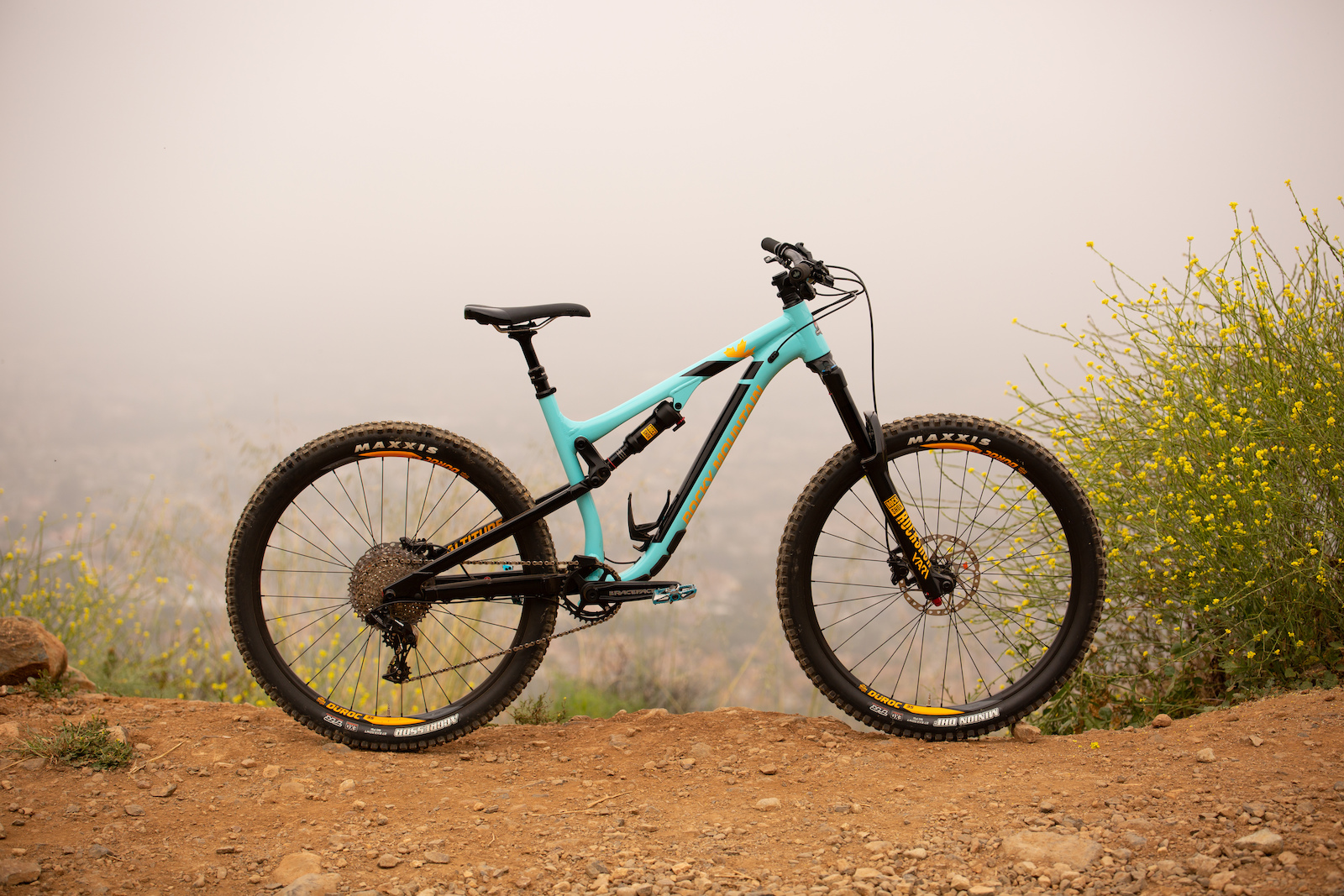
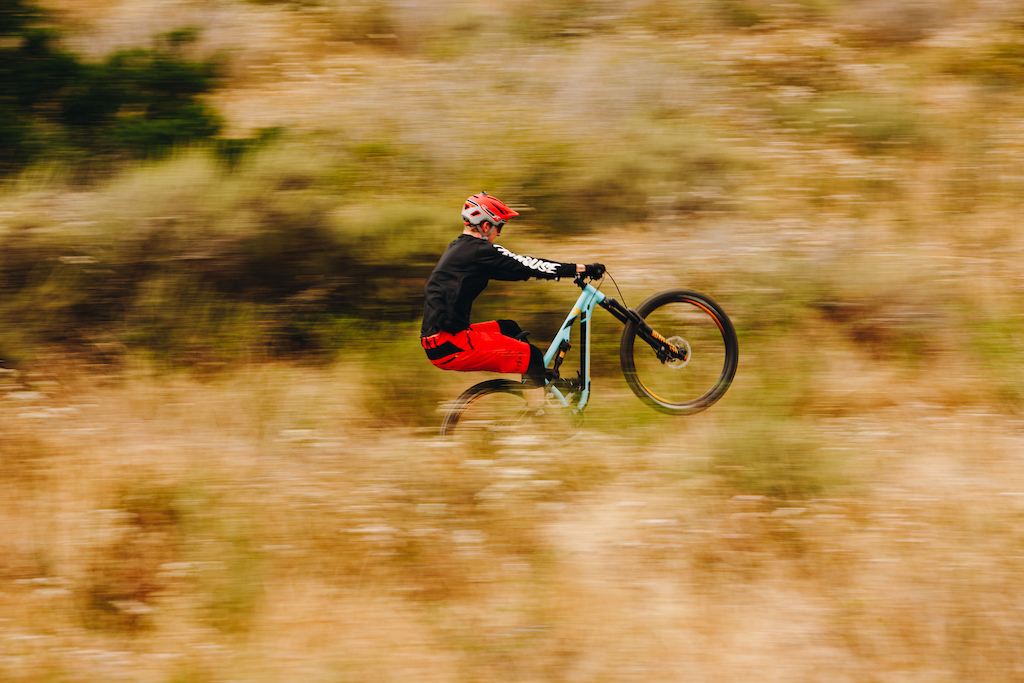

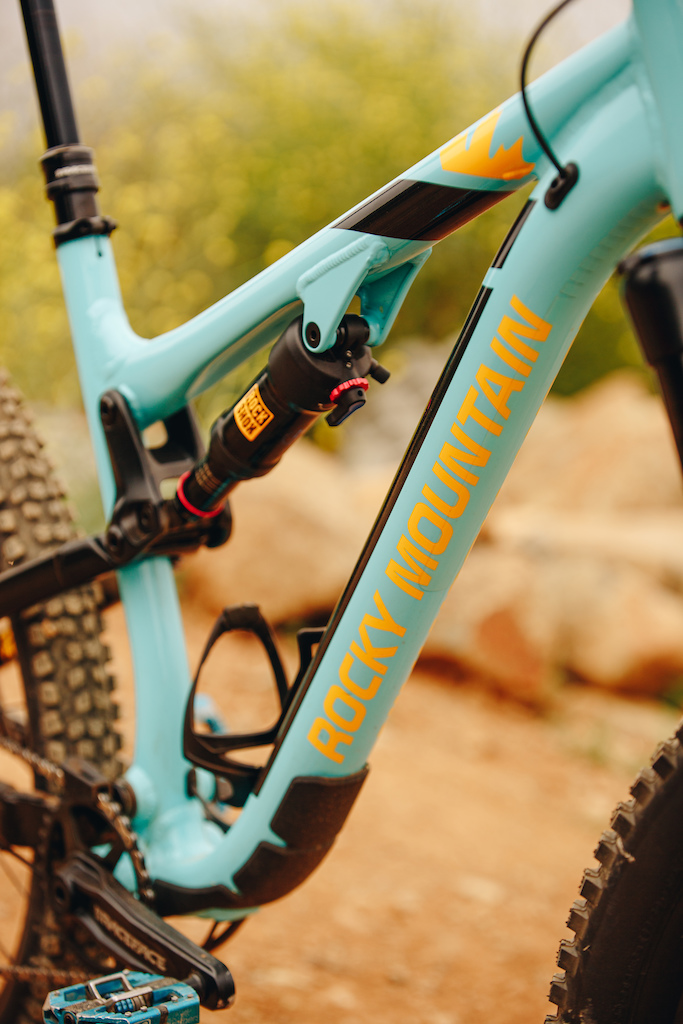

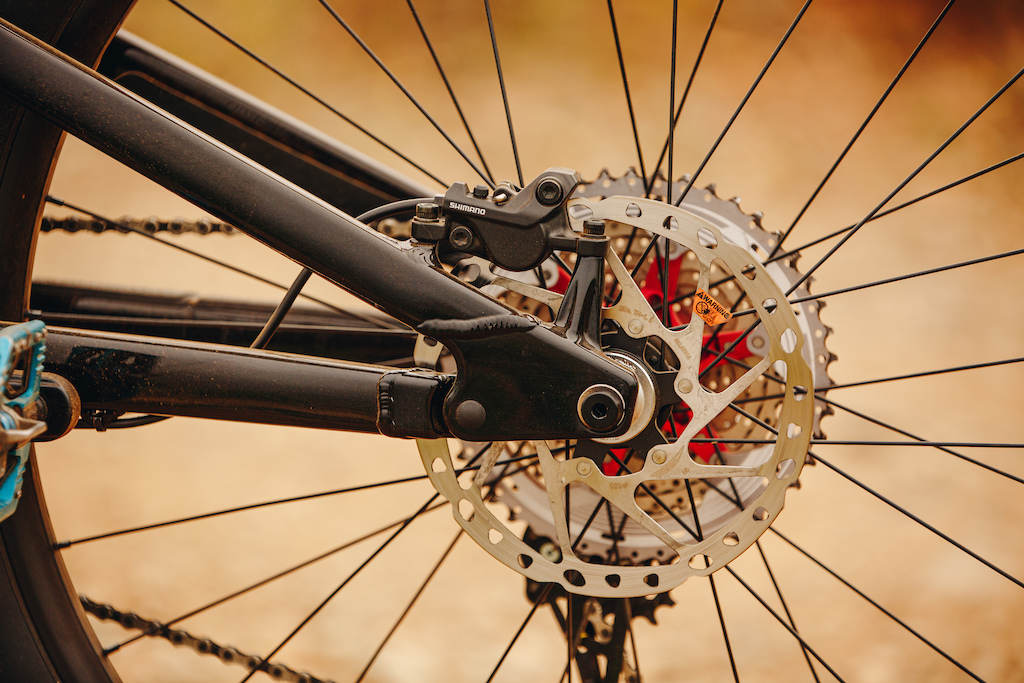
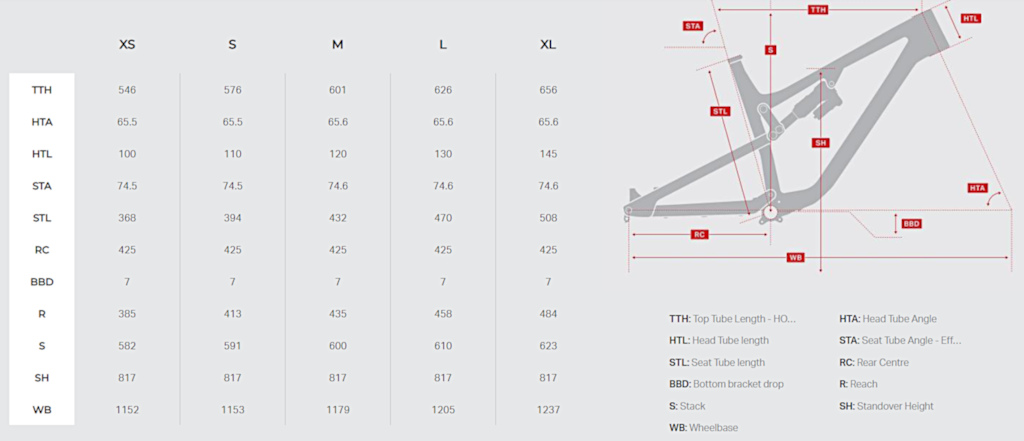


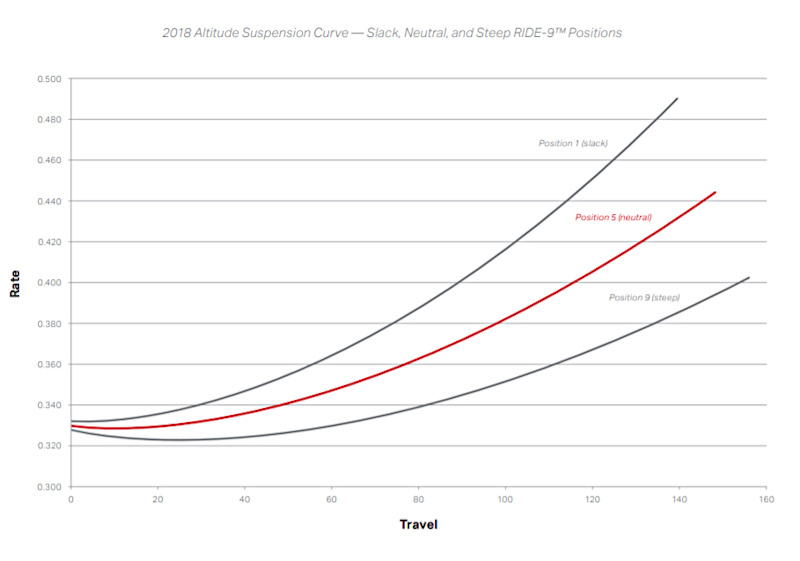

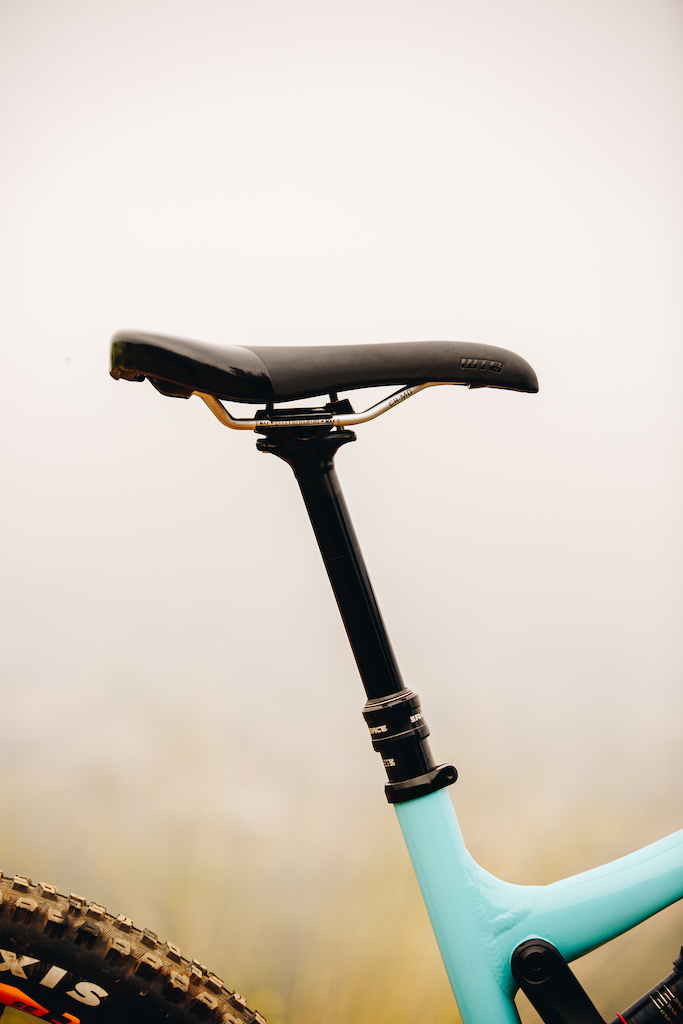
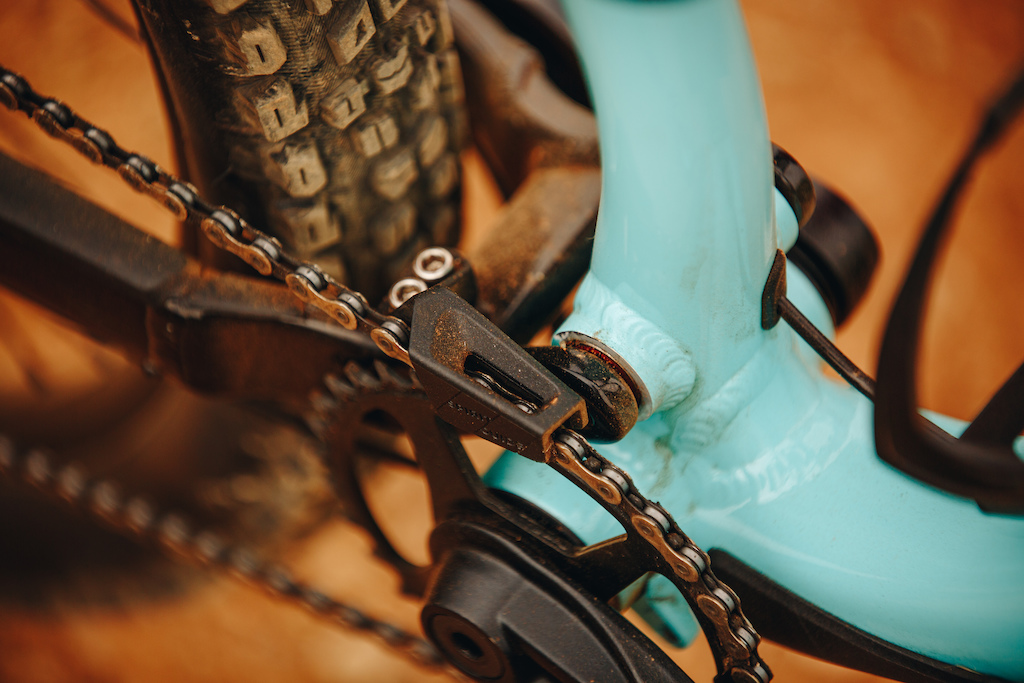
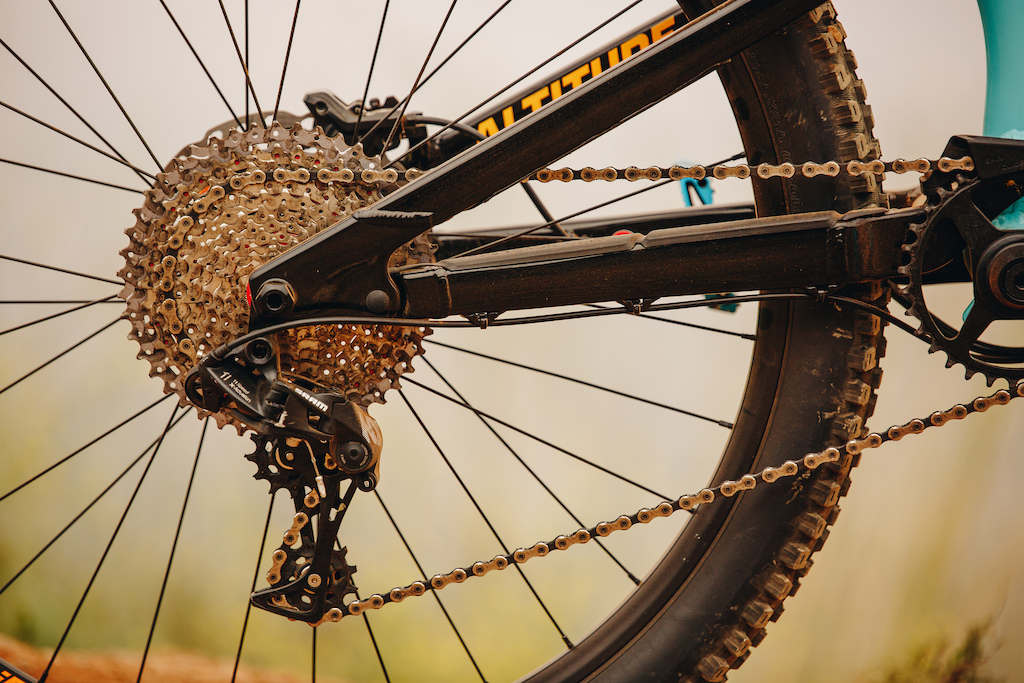
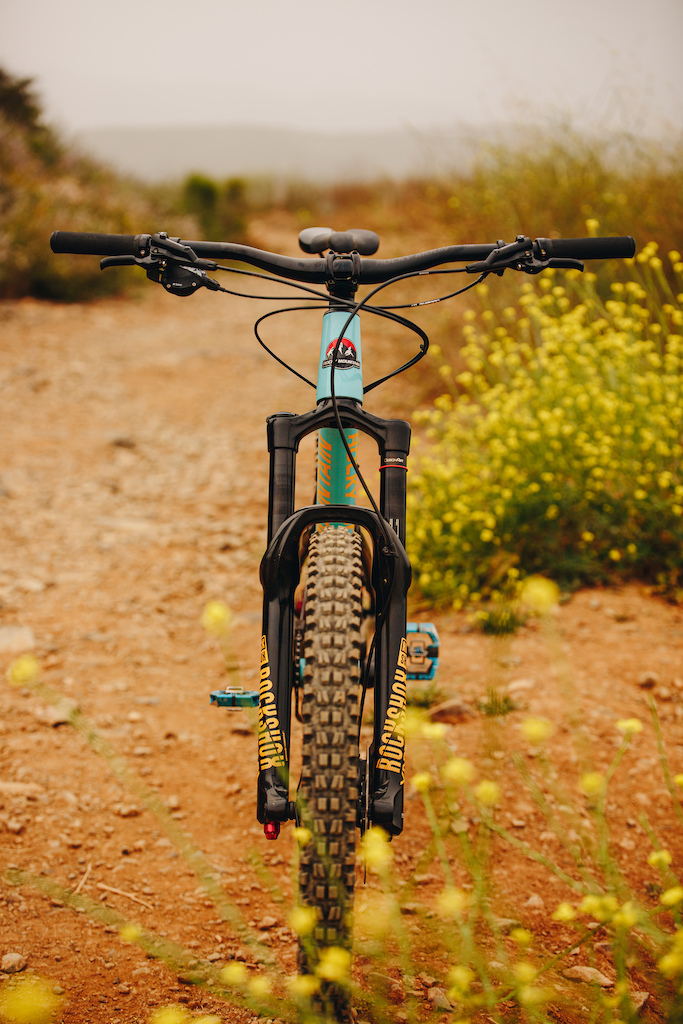
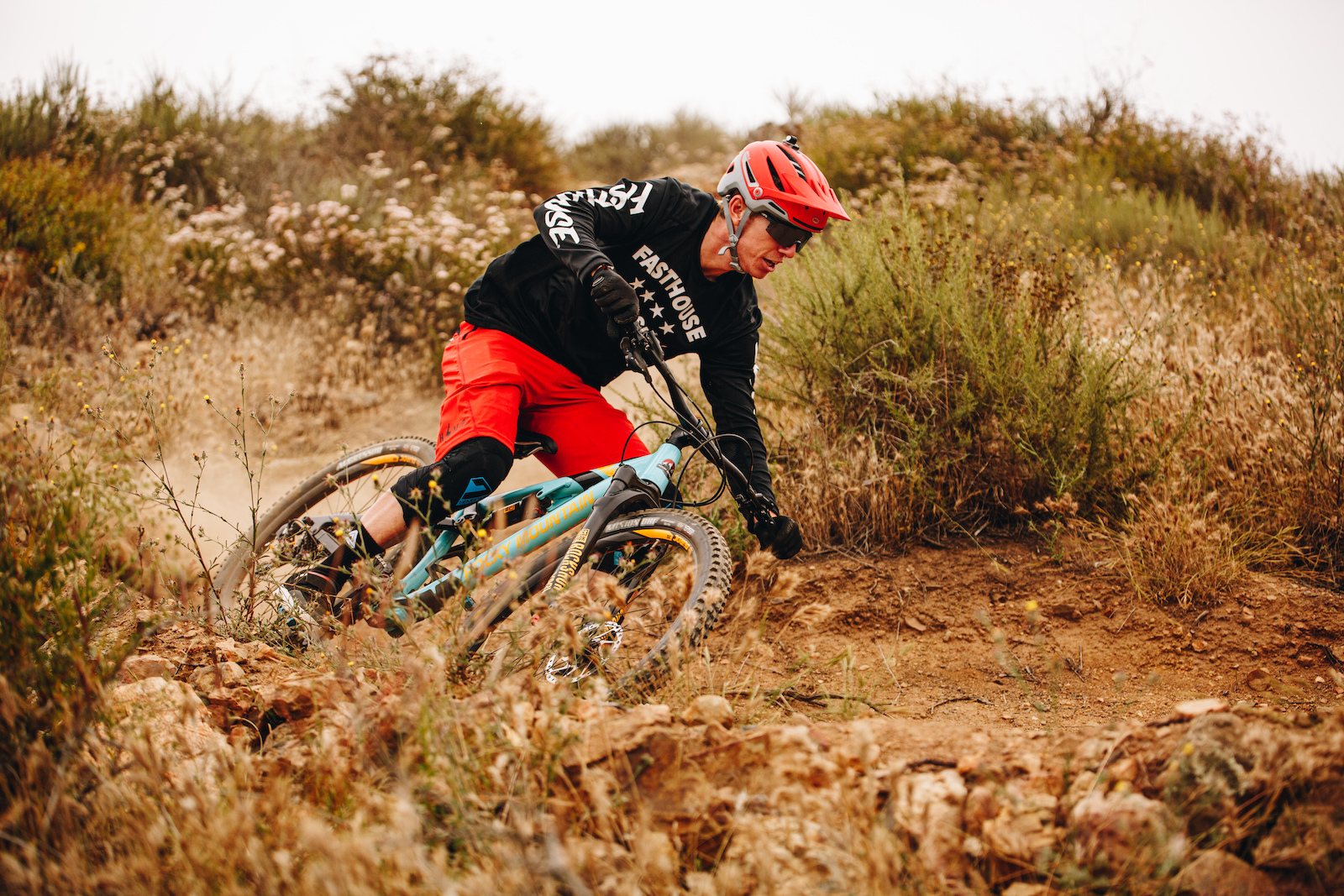

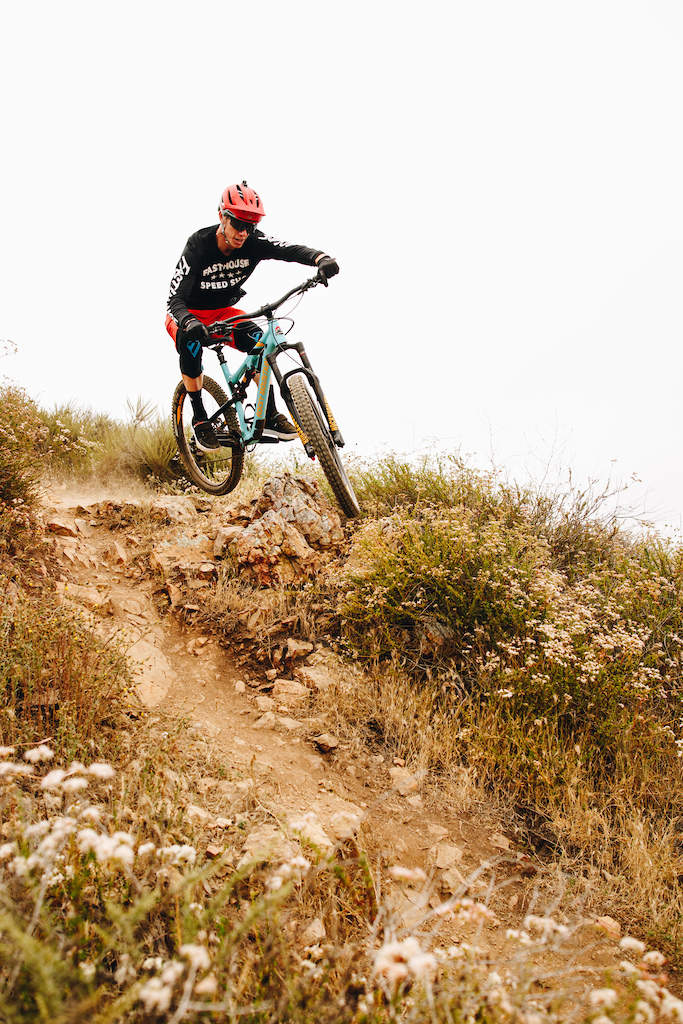

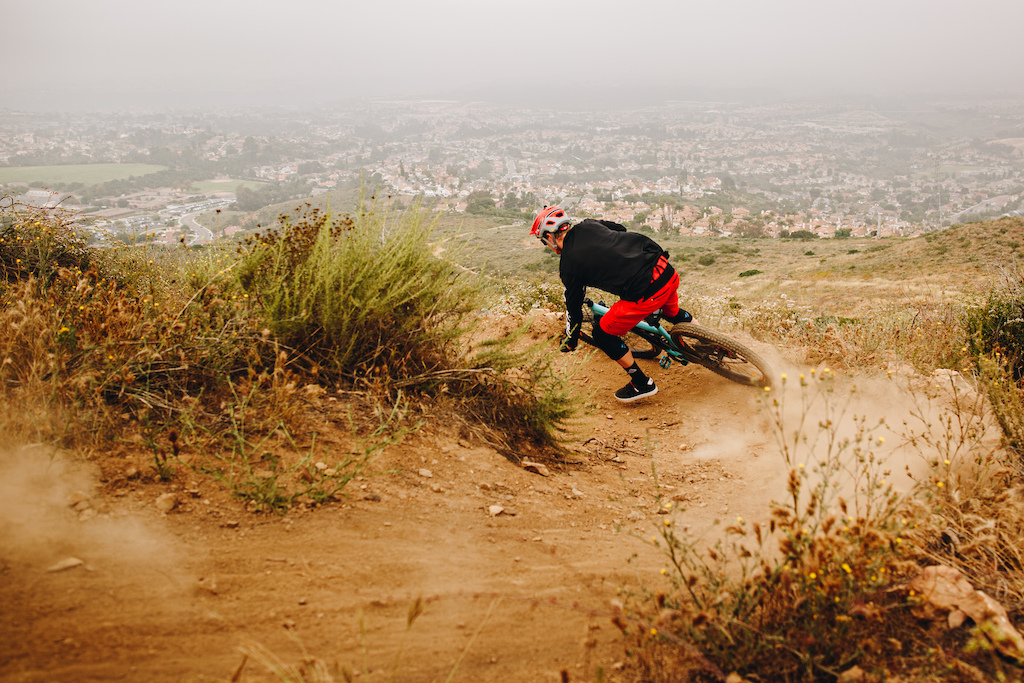
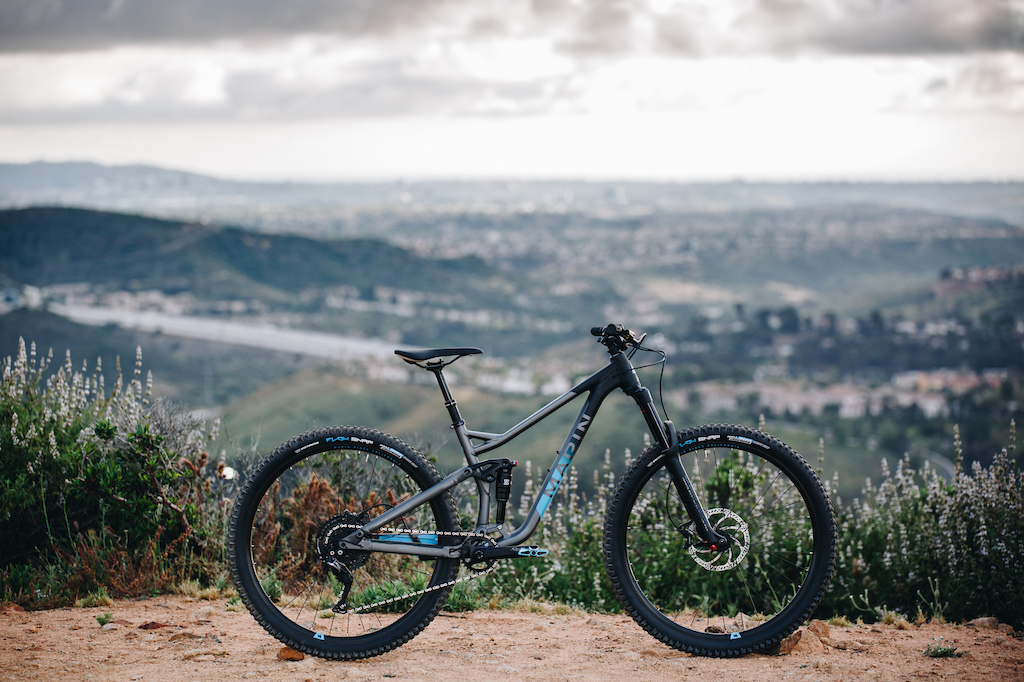
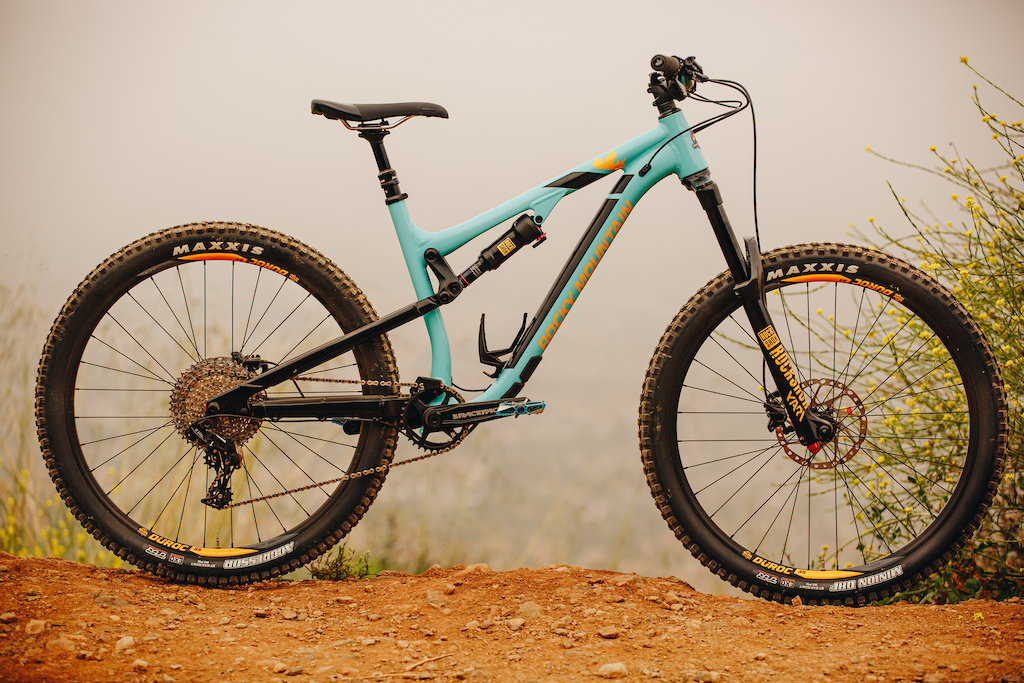

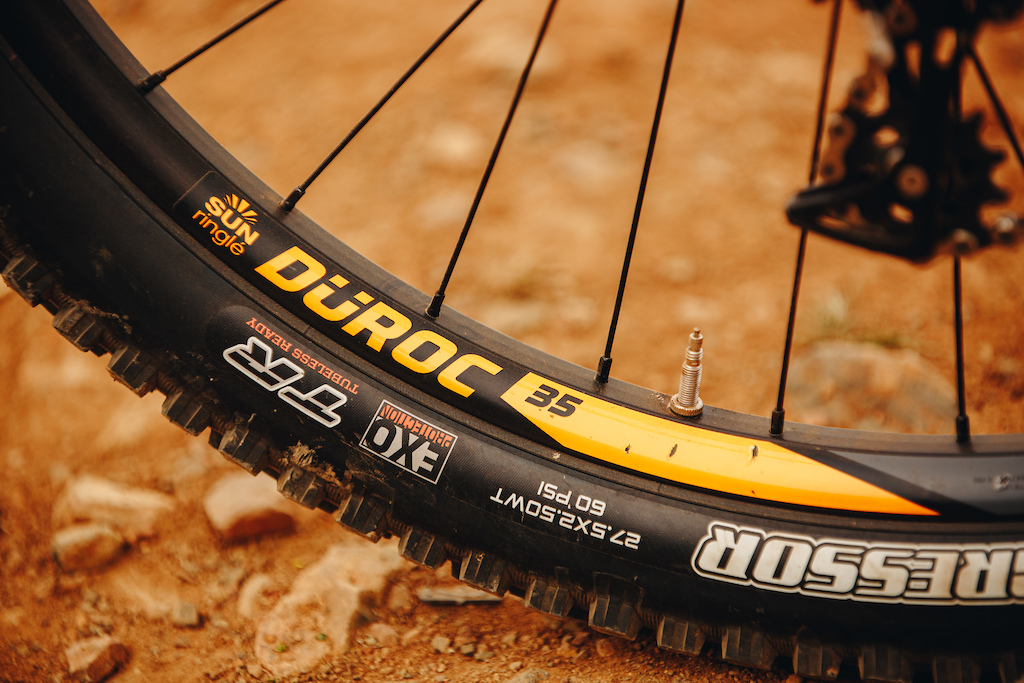

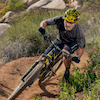
Oh shit did somebody order medium roast
Other than that, it’s great to see more reviews of affordable bikes as compared to the 8k+ superbikes. Anything to get more people into the sport is welcome in my book.
This bike looks fun
Now proposal. E-bike content was supposed to be censored for the North American audience. I'd recommend e-bike comments from the North American audience (especially in a non e-bike article) is getting censored too. Just to keep the place tidy. And for their own good, of course.
As the adjustment seems to be an issue (good or bad) here, it would be interesting to see this one compared to the Rose Pikes Peak which also offers on the fly suspension adjustment. Limited to four settings, which may be suited to those who feel overwhelmed by having those nine settings.
This was a more extreme case, but it shows the potential of the feature. For most, I'll tell them it has adjustable geo, but they'll probably never touch it, because - as RC mentions - it works great in the neutral setting. However, it's the outliers that tend to benefit the most from Ride-9, not the size-mediums. It doesn't provide nine different options for every rider, it just gives a couple very useful options that can help cover every rider's needs.
edit: I'm basically echoing the sentiments @vinay gives above. He's spot on.
THIS. So glad to see someone else say this. I’ve thought the same since I’ve seen them on the trail
Haha
That said, I'm sure there are many places where there is overlap in what fasteners are appropriate and engineers haven't stepped back to see the bigger picture of wrenching before choosing
And $3000 isn't really the low end of good bikes. Even sticking with full suspensions you can actually buy in a store, bikes like the Giant Stance and Marin Rift Zone are available under $2000 and that's not even looking at direct to consumer brands.
Everyone else: That's how markets work! Enough people willing to spend $8,000 and obsess about grams and number of carbon bits and gear count and range that other people can and will keep charging $8,000, or more, for marginal gains. There are also enough people that only want to spend $1,500, and wouldn't know where to start counting grams, and will get actual gains just from getting out there right now instead of saving up for 4x the price and almost unnoticable gains at their experience level.
And switching to the UK I see £2700?
Are you guys adding in tax?
last Sunday. It was a fine bike but I will never own another one after riding a good 29er.
Aren't choices still good? They make the Instinct if 29 is your thing.
Ultimately, I really appreciate what Specialized (on the SJ) and YT do when they realize there are fans of both wheel sizes and they just make a version of the same bike for both 27 and 29. It's a little extra engineering, sure, but I would think you would sell more bikes since you can cater to both preferences and not turn off people adamantly opposed to one size or the other.
The only (really a non-issue) issue I've ever had is that the first free sprocket (the upper 6-7 are on 2 alloy carriers) seems to always be one that I use a lot and it notches up my freehub and becomes a pain to remove the alloy carriers! Gotta get that steel freehub body on order!
(Would love to try Shimano 12sp though, sounds like it's actually the best ever, but I'm boycotting since they won't let Hope make a freehub which means I can't run it on my wheels, and needing new wheels for a new drivetrain is even worse than them implying you need a new crankset for a new drivetrain!).
It find it is really is 3 positions x 3 BB & 3 Shock firmness adjustments.
Steep - Medium - Slack
High - Medium - Lower
Stiff (sits higher until medium hits) - Default (\small hits get shock working). - Softer (squishy and compliant)
Primarily this means you don't need to add volume spacers to my DPX2 to adjust the shock. You can adjust the Ride-9 setting. It is also worth noting that the DPX2 compression switch works very well on this bike and further adapts the suspension curve while riding. I use it all the time. (mostly trail rides)
I run mine in the #9 position for pedally trails up and down trails and #3 or #1for lift riding.
Anyone can adjust the chips on the trail or in the parking lot so I disagree that it's too complex for most riders.
It's easy to experiment and riders find what they like.
I LOVE the system. Makes my previous Yeti seem like a 1 trick pony.
On a separate note, my bike came with a 34 front ring which is essentially useless for trail riding.
With the SRAM 11 x50t GX Eagle, only the top 3 gets map even close to a 1x10 drivetrain so the 12 speeds do not give you any extra gears. I suggest dropping to either a 32 (that's what I'm using now) or a 30. A 32t ring will give you one extra easier gear for low-end power. Using a 30 front ring gives you 2+ easier gears, and means that your active gears are mid way in the cassette where the spacig is closer between the cogs for more efficient changes. If you are pedalling a lot in XC mode, run the 30. (counterintuitive I know)
M.
Follow the PB reviews and you'd realize how little does the review to really describe the differences in bike handling and suspension performance between bike brands and suspension layouts. Especially Horst vs Single pivot produces bikes with completely different characteristics and typically a rider would prefer only one type of suspension layout.
What you give people is how you feel about the bike, what people want is info which would let them visualize how they would feel and here you fail miserably. So maybe instead of laughing at comment section you could try to give some scale of stiffness, comfort, handling etc.
I love my personal fleet of Devinci bikes, and up until about 2016 they were an excellent value, at least in Canada. However, their pricing has gone the way of Santa Cruz in recent years. I'm going to give a hard pass to the new Spartan when companies like YT give me 95% of the frame performance with significantly better components for 2/3 the price.
Anyway, let's put the weight factor on side, overall it is damn nice bike!
I have the Allow 70 with DPX2 and Fox 36 (1 extra volume spacer).
The most surprising thing in the bike... the Duroc rims.
Sure maybe the rear is a bit flexy and the shock might heat up under a real ripper, but you also praised the bike as being great for both newbs and top-level riders. So the fast rider swaps out the shock, and maybe the NX stuff and/or wheels eventually, and both of them just deal with the flexy rear because it's still better than we had 5 years ago and it didn't ruin anyone then.
Would be one of my top choices if I had to replace my old 2008 Slayer SXC that still works... so well.
Looking forwards an alloy version of the latest Slayer, one day, but probably preferring that `do-it-all` kind of bike, considering that the Instinct is an excellent option too.
For now, my good old Slayer does the job, and don`t think I`m gonna break it on purpose just to buy another bike!
Telling us the rebound clicks without knowing the spring pressure and without knowing how many clicks the manufacturers recommend for that pressure is just stupid.
We'll put . Fast is not always a measure of enjoyment on a bike.
I just put in a slightly larger volume spacer to get it to not be so linear ????♂️
Then for park days I slap it in the slackest option... ????????
At the low end of OEM pricing, I would figure something form Manitou or XFusion would get you better performance for the price, but gotta have those main brand logos on your bike if you want it to sell well.
It's Deluxe. Also, welcome to the world of under 5k bikes guys. That's one small step for a PB reviewer, one giant leap for mankind.
A hidden but required upgrade.
I wonder what's the bb height, it doesn't look low, somewhere just shy of 350mm?
I feel that 27.5" is superior to 29" in small & medium sizes for this type of riding/ size rider.
I am not sure when these same PNW companies started putting more of their cables below and around the bottom bracket. I always thought that up-high cables were a cool design choice.
That said, the manufacturers who don't spec a bash on a design with under-BB routing are just Doing It Wrong.
And they realized that the high-routing didn't actually help anything "protection"-wise, especially as housings went full length and then internal.
Now, I’m over it. Had 2 Santa Cruz bikes before...
www.bikemag.com/wp-content/uploads/2017/02/precept_150-2.jpg
Some shrink wrap or cable shielding would protect them well enough but it's a band fix for sure. I don't like cables there either
Not getting my $$$.
NO THANK YOU.
Lets see, Rocky posts Canadian pricing on their webpage, and Pinkbike (while Canadian based) has readers all over the world... hmm... what makes the most sense for them to publish in, perhaps a unit that is (for the moment) the international standard currency against which all others are measured...
Oh, and if you bothered to visit Rocky's website, you would find that the Canadian pricing is $3,799.
Quit being the victim of focus groups.
The USD is a lie. How they have managed to dupe the world for this long is incredible.
Price in CDN is clearly on bikes.com website.
If you think the price is too high, then learn how to say that.
You're bitching that an astoundingly capable bike, with an excellent review, moderate end parts, reasonable weight, and solid warranty with excellent dealership network is bad value because... you don't like the Canadian dollar exchange rate?
It's almost like a Canadian company like Rocky has to order most of their parts via the United states, and has to deal with import fees and taxes just like any other company out there... weird.
Oh, and where can you find a bike that has these specs for less than 3k? Hmmm... not even YT with their quantities of scale can meet those requirements. Its ALMOST like that on top of making bikes, some of these companies want to, you know, pay their staff and MAYBE even turn a profit? Weird I know.